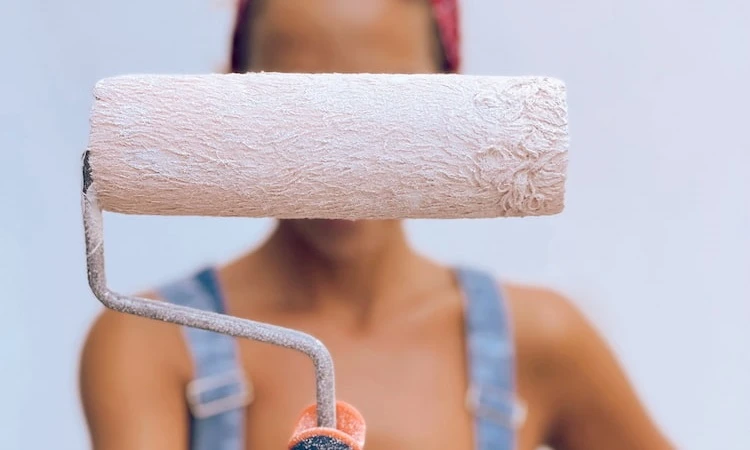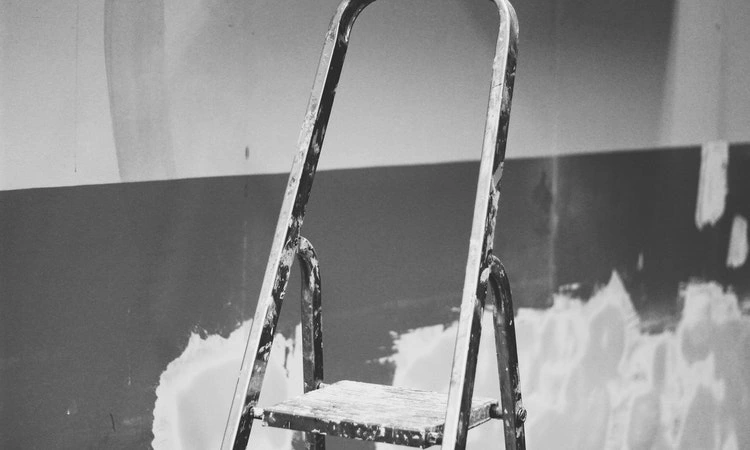Are you getting ready to paint the interior or exterior of your house? Are you wondering if the color you chose is the color that is going to appear on the surface?
Maybe the paint will dry darker or lighter. But how do you know?
The paint can appear darker or lighter depending on a few outside factors. Wet paint can look lighter or darker depending on the paint used.
The environment can also affect the appearance of the paint as lighter environments can make the paint appear darker. Some finishes can even make a paint color look darker or shinier than other finishes.
Countless different things affect whether paint looks darker or lighter. However, the end paint color should look like the color indicated on the lid or swatch.
In this article, I will dive into the various mechanisms that affect the appearance of paint color and how it can differ from the image in your head.
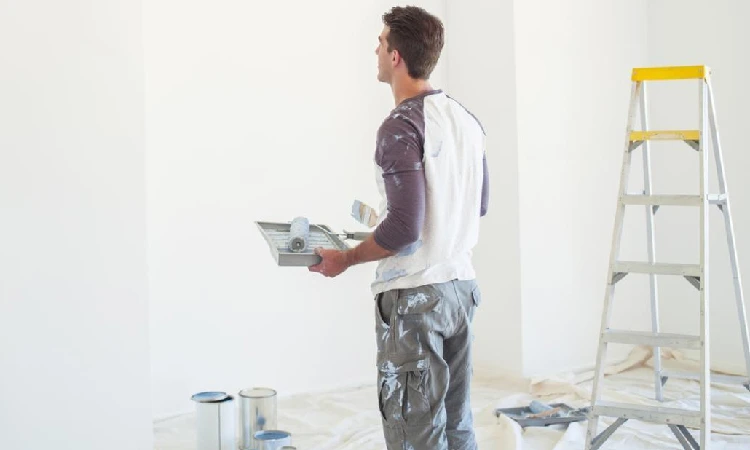
Will the Paint Color Change After it Dries?
The paint on your walls will change color after it completely dries. When the paint is applied to a wall, it is wet.
Think about anytime you have gotten something wet. Even a paper towel changes color when it comes in contact with a liquid.
In paint, this color change occurs because the solvent is blocking the light from reaching the particles of the paint.
All paints have some type of solvent in them, typically water or oil.
As the paint dries, the solvent begins to evaporate and the color you picked out based on the swatch should begin to come through as the solvent dries.
Keep in mind that it can take up to eight hours for the paint to completely dry. You should wait the full eight hours before changing your mind about the paint color.
While your paint dries you should continue reading this article to find out more about what causes the paint to look different than you originally imagined.
Reasons Why Your Paint May Seem to Dry Darker?
There are a few different things that can make the paint appear darker after it dries.
Things such as the environment, how many coats of paint are applied, and possibly a brain allusion is causing you to see a different color than you originally hoped for.
Environment
The environment of the room can affect if the paint color appears darker than originally planned.
For example, you may choose an accent color that is one shade darker than the rest of the room but once dried it appears several shades darker.
This happens because light colors absorb more light than darker colors. The color on the wall may match the swatch you originally chose, but it can appear darker due to its surrounding.
Second Coat of Paint
You should always apply more than one coat of paint, especially when working on exterior surfaces.
The second coat of paint can make it appear darker as it adds more pigmentation. However, the second coat of paint is vital because it protects the surface from the elements.
If you feel a paint color is too dark before a second coat is applied, it is best to find another color as it will only become more pigmented, therefore making the paint appear darker.
A Mind Trick?
Some experts believe that paint can appear darker due to an allusion. You choose a paint color based on what is on the color swatch, and you imagine that color on your walls.
However, paint colors appear differently to the eyes when they are on a large surface compared to a small swatch.
The color of the paint did not change, it is the same color as the color swatch. Your brain has just imagined one thing and the paint may dry differently.
Type of Paint Used
Oil, acrylic, and latex paints typically dry darker than other paints.
Remember that if quality paint is used the end color should still match the swatch no matter what type of paint is used.
However, different sheens of paint can also dry darker than others, but I will go into more detail about that later.
Reasons Why Your Paint May Seem to Dry Lighter?
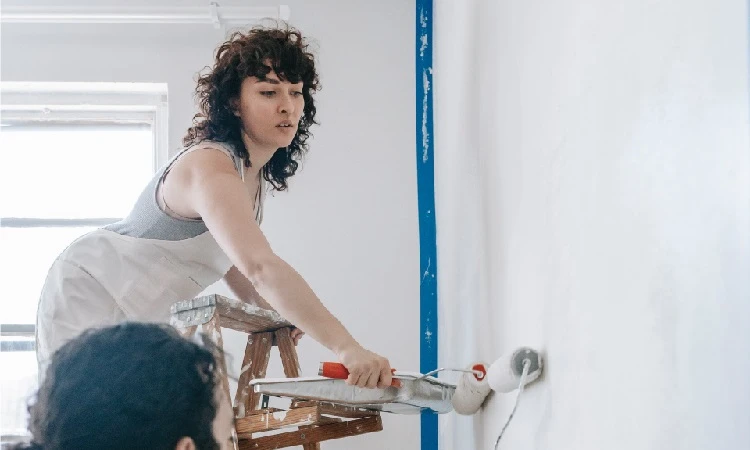
Just as some types of paint colors dry darker, there are also paint colors that will dry lighter.
This can occur due to the type of paint being used and what chemicals are contained in the paint.
Watercolor Paint
Watercolor is one of the few paints that will appear lighter when it is dry. Watercolor is water-based paint that absorbs light.
They are also more watered down than other types of paint. Water dilutes the pigments, which are why the paint appears to dry lighter.
Theoretically, it is possible to water down a paint color, but you run the risk of adding too much water.
Chemicals in the Paint
Paint can also appear to dry lighter depending on what chemicals are in the paint.
Some chemicals are the same size as water droplets, which means light is reflecting off the water and not the chemical in the paint.
Once the paint has dried and the water has evaporated the light can bounce off the particles of the paint and show its true color.
Can Different Sheen Paints Dry Darker or Lighter?
Different sheens can be used for different paint projects around your house, but they do dry differently. Gloss finishes reflect more light and will therefore darken as the paint dries.
This phenomenon is more of an optical allusion because the paint color itself has not changed.
Matte or Eggshell finishes will match the color and pigmentation of the paint swatch better than any other finish.
These finishes will typically darken a little bit. However, they do not darken as much as gloss finishes.
Flat finishes on the other hand may dry darker or lighter depending on the environment surrounding them. They tend to have a more chalky appearance which can make them appear lighter than other finishes.
Does Paint Darken Over Time?
Has it been a few years since you painted your house? Do you feel like the paint color has gotten darker than you remember?
Your paint may be dirty. This sounds weird, but hear me out. The exterior of the house gets pounded by wind and rain all year, it makes sense that rain and wind carry dust and debris, which is now stuck on your house.
Mild soap and water may be all you need to restore the original color on the exterior of your house. But what about the interior?
While your walls are not being attacked by rain and wind, they are being attacked by hands, furniture, and pets.
Related Read: Can You Use Interior Paint Outside & Why
Furniture can easily scratch walls and chip off the paint. This takes away the shine that was originally there.
Pets and hands are undoubtedly touching your walls more than you realize. Every time your walls are touched small particles of dirt and debris are being deposited on them.
Again this can be easily remedied with mild soap and a nice scrub down. This will not return the color to its original shine, but it will make it look cleaner and brighter than before.
What if cleaning did not restore your paint color? Then your paint may have faded over the years.
Fading Vs. Color Change
Many paints will not darken over time, but the color may begin to fade. Fading paint colors can look darker or lighter depending on the person.
Paint colors tend to fade over time as they are exposed to UV light. Some colors such as yellow and red are more susceptible to fading than others.
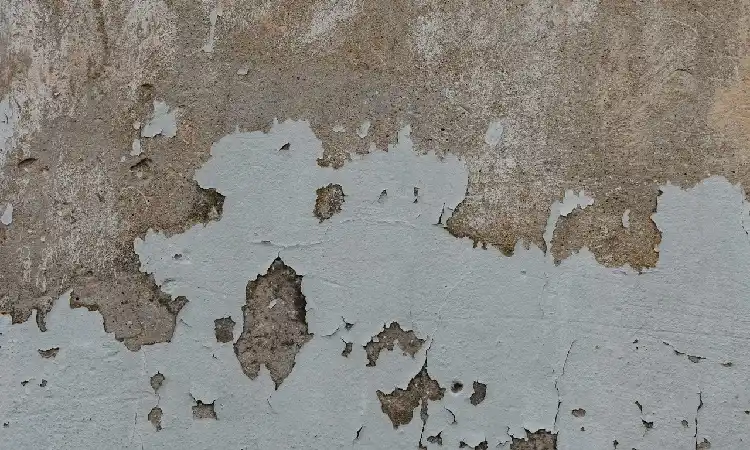
Can fading be prevented on exterior surfaces? If you are painting an exterior surface, make sure you choose exterior paint.
Exterior paints are produced with chemicals to help reduce fading caused by sunlight. It is important to note this is not a guaranteed way to stop fading since some paints will fade as they interact with chemicals in the environment.
Unfortunately, there is not much that can be done to prevent the paint from fading. Some people believe that applying more than one coat of paint can help prolong how long the paint will last before it begins to fade.
There is no true science backing this. However, it is known that applying a second coat increases the pigmentation of the paint.
This is probably why people believe multiple coats help prevent fading.
You should not stress too much about your paint color fading as the process takes a long time.
Your paint will not look faded overnight. You will not notice that their paint is faded until they perform a patch job using the original paint.
Does Wet Paint Look Lighter?
Certain wet paints will look lighter. For example, oil and acrylic paints look lighter when they are wet. These paints will darken as their solvent is evaporated.
Watercolor paints on the other hand look darker when they are wet. Think about a t-shirt. Doesn’t it look darker when it is wet?
The same is true of watercolor paints because water is their solvent. As the t-shirt and the wet watercolor paint dry, the water is being evaporated from it.
Once the water is evaporated, the light interacts with the paint particles instead of the particles of water.
How Long Does Paint Take to Dry to its True Color?
On large surfaces, it can take interior paint 8 hours to dry. Smaller patches of paint will not take as long.
Plus, a blow dryer can be utilized when performing repairs or testing a sample of the new paint color.
The second coat of paint should never be applied until the first coat is dry. This helps prevent streaking and dripping paint.
Make sure you still apply a double coat to your test patches. A double coat adds depth to the color and can change the way it looks.
Exterior paint can take between 4 and 8 hours to dry. Different types of exterior paints will dry at different times. Latex paints can dry in as little as three hours.
In contrast, oil-based paints can take 6-8 hours to dry. The humidity around the house also affects how fast exterior paint dries. If it is a humid day, the solvent will not evaporate very quickly.
It is recommended to not paint an exterior surface if the humidity is over 50. The humidity will prevent the paint from drying.
It will also cause the paint to drip. No one wants streaks of paint running down the side of their house.
Will Exterior Paint Dry Lighter Or Darker?
When exterior paint is wet, it can look lighter or darker than the intended color. The wet paint can look lighter if there is natural light present.
On the other hand, the wet paint can look darker if there is no or little natural light present.
Now, exterior paint will dry at least half a shade lighter than the color on the swatch.
Why does it dry lighter? Because of the presence of natural light. The paint itself does not change color simply because there is natural light.
However, the paint will appear lighter because it is on a large surface and exposed to UV light. Many professionals recommend you paint a sample patch on each wall on the exterior of your house.
Once the paint is completely dry, you should look at it at different times of the day. This allows you to see how the sunlight reacts with the paint color.
Will Primer Affect the Color of the Paint?
There are a lot of benefits to applying primer before painting any surface. If you decide to not utilize a primer before painting, the paint may look duller than originally anticipated.
Primer will affect the end color of the paint, but it typically makes the paint look better and more vibrant.
Some surfaces such as brick and wood are very porous. Primer seals off the pores of these materials allowing the paint to better adhere to the surface instead of seeping into it.
If you do not apply a primer the color will seep into the porous material and appear dull and faded.
If the original paint color is darker than the new color, applying primer will enhance the color of the new paint. It is difficult to cover up navy blue or black.
The primer will help prevent the darker color from seeping through the lighter color and allows the new color to shine.
There are also primers created with a built-in stain killer. This is a great option if you are covering up damage from a previous leak.
These types of primers seal off the stain and will keep it from penetrating the new coat of paint.
Should Your Primer Be the Same Color as the Paint?
A primer does not necessarily have to be the same color as the paint. However, it can make the painting job a lot easier.
Tinted primer can decrease the number of coats of paint that need to be applied and can allow the new color to start coming through before the paint is applied.
Some paint stores will suggest adding a small amount of pigment to the primer that is similar to the color of the paint. This can be beneficial when covering up a darker color.
Other primers come pre-tinted and are typically tinted with a grey color.
Sherwin Willams has found that a lot of their colors perform better when they are painted over a primer with a grey tint.
They have even produced their own line of grey-tinted primers. Their primers range in 6 different as some projects need a lighter shade than others.
Verdict
I hate to be the bearer of bad news but there is no definitive answer to whether your paint is going to dry darker or lighter.
The paint is going to dry a different shade compared to the wet paint. However, it should dry similar to the shade of the color swatch.
If the paint appears lighter or darker, it is either an allusion or someone did not mix the colors properly.
Do not forget that the type of sheen you choose can also determine if a color dries similar to the color on the swatch. Gloss sheens tend to dry darker and have more shine.
Whereas matte and eggshell sheens look more like the color swatch. Flat sheens do not make a color dry darker, or lighter, but it does have a chalky finish.
The best advice is to test the paint on a few different walls and see how the light hits it. Some of you may already be halfway through the painting process and you’re stressed reading this article.
But have no fear. You should wait for the paint to completely dry before making a decision.
You may find that you like the paint better than you imagined. Just remember that the second coat will not lighten the color.
The second coat of paint is adding more pigmentation to the wall which makes the color richer and darker.

